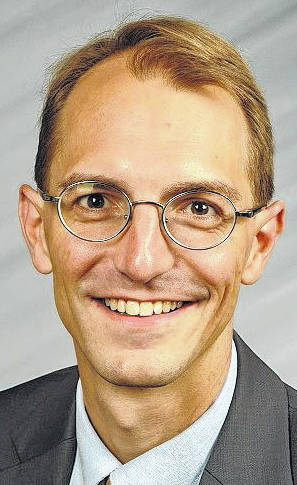
“The killer looked sallow and weak and beady drops of perspiration stood out on his forehead.”
— The Buffalo News, Sept. 26, 1901
“In taking the life of our beloved President, you committed a crime which shocked and outraged the moral sense of the civilized world.”
— Judge Truman C. White
America has seen the assassination of four presidents, two in the 19th century and two in the 20th century. The third of those assassinations occurred in my hometown of Buffalo, New York, and is particularly noteworthy because of the nature of the criminal trial that followed it.
Only two of the four presidential assassins in our nation’s history have stood trial. Both John Wilkes Booth and Lee Harvey Oswald were killed in the aftermath of their criminal acts. Charles Guiteau, who shot President Garfield in 1881, carried out his act in July, went on trial in November, was convicted in January, and was hanged the following June, just shy of a year after the assassination.
But Leon Czolgosz, whose bullet claimed the life of President William McKinley at the 1901 Pan-American Exposition in Buffalo, pulled the trigger on Sept. 6, McKinley died on Sept. 14, and in less than two weeks — 118 years ago today — the jury returned a guilty verdict in the killing. The trial lasted only three days, and Czolgosz was strapped into New York’s electric chair two days before Halloween of the same year. From the firing of his gun to the day of his execution, only 53 days had passed.
Both the president and his assassin had Ohio ties. McKinley was a Canton native, had represented Ohio in Congress for 13 years, and had served four years as governor of our state. Although born in Detroit, Czolgosz moved to Ohio in his youth and had spent his adult life in Cleveland. He lost his factory job in the panic of 1893, and migrated to anarchism at a time when even publicly declaring oneself an anarchist was illegal in several states.
It was reported contemporaneously that the only reason Czolgosz was spared from a mob at the time of the shooting was that McKinley shouted “Let no man hurt him!” The assassin was originally charged with assault with intent to kill, but when the president succumbed to his wounds on the eighth day, the legal picture changed. Just two days later, as the president lay in state at Buffalo’s City Hall, the prosecuting attorney of Erie County called 28 witnesses before the grand jury in a single day. By 4:40 p.m., an indictment for murder in the first degree was returned.
Wasting no time, Czolgosz was brought before a judge within minutes of his indictment. Legal standards of the time — still in place in many locations today — prohibited him from appearing in court in chains or shackles. The district attorney asked him once, twice, and then a third time if he wished to have an attorney appointed for him, but the assassin remained stone-faced and did not reply.
The local bar association president was consulted, and it was determined that only by appointing the most respected and talented counsel could the trial of the assassin be kept from devolving into a sideshow. As such, two former Justices of the State Supreme Court, Jordan L. Lewis and Robert C. Titus, were appointed to represent him. When the prosecution said that they wished to have the trial begin the following Monday, Judge Lewis replied that the evidence was available and he saw no reason for delay. Lewis later said that taking the case was a “duty owed to my profession, to the public, and to the Court.”
Mental health experts examined the defendant and determined that he was sane. He told his attorneys that he wished to be interviewed by detectives, and then proceeded to not only admit to killing the president, but to claim pride in having done so. On the morning of the 23rd, Czolgosz attempted to plead guilty, but the court refused his plea.
It took only two-and-a-half hours to seat a jury. Each of the jurors stated that they had already formed an opinion about the guilt of the accused, but that they could be swayed by the evidence to whatever conclusion was appropriate. Following several days of testimony, Judge Lewis asked Czolgosz if he wished to testify, but he refused and the defense rested.
In a December 1901 review of the trial in the Yale Law Journal, it was written that, “Everyone knew that the duty devolved on Judge Lewis was most distasteful, yet he performed that duty most nobly and well.” After noting that the defendant “has not aided us,” Lewis told the jury that the only remaining issue was that of whether Czolgosz was sane. The jury deliberated for a mere 34 minutes. The same Yale Law Review article concluded that history would treat Czolgosz as “a sporadic product of Socialism and Anarchy.”
In the entire process of his trial, Czolgosz said nothing to the court other than to state that he had acted alone. His trial was stunningly swift, but only because he chose to raise no defense. There were no motions for a new trial. There was no appeal. And 118 years ago today, the Buffalo News banner headline proclaimed, “Conviction Came Swift and Sure!”


